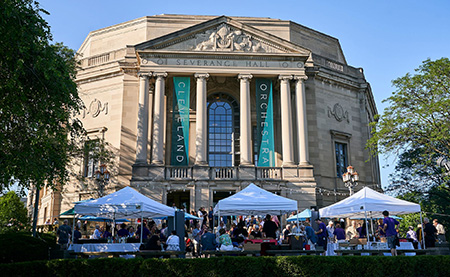by Daniel Hathaway

The largest of the two works came first: Mahler’s Songs of a Wayfarer pitted the fine German baritone Ludwig Mittelhammer against a large orchestra. Surrounded but not defeated, thanks to Mahler’s fastidious orchestration and the transparency that The Cleveland Orchestra brings to complex textures, he carried splendidly over the ensemble except in a few climactic moments.
The composer wrote the poetry for the four Wayfarer songs himself, chronicling a personal journey similar to Schubert’s Winterreise. The second, Ging heut’ Morgens übers Feld, shares its material with the first movement of Mahler’s First Symphony and establishes the emotional mood of the set: though surrounded by all the glittering beauty of the natural world, the poet will never find happiness, and even longs for death to end his despair.

Those winds (along with brass and percussion) having left the stage, the double basses redeployed across the back of the stage for Welser-Möst’s string orchestra version of Beethoven’s String Quartet No. 15.
The composer’s next-to-last quartet is well known for its affecting Heiliger Dankgesang movement, Beethoven’s song of thanks to the Deity for his recovery from a life-threatening illness. A lesser-known fact, ironic for contemporary musicians who imagine they’re doing something new by playing in non-traditional venues, is that the piece was first performed in 1825 in the Viennese tavern “Zum wilden Mann.”

The violins, headed up by concertmaster Peter Otto, were particularly impressive, achieving a miraculous single mindedness in fast passages, and Welser-Möst gave Otto a fine solo opportunity in the cadenza that led into the finale. But the most transformative aspect of the string orchestra arrangement is the frequent octave doubling of the cello part, a role in which the Cleveland bass section covered themselves in glory.
Photos by Roger Mastroianni.
Published on ClevelandClassical.com July 17, 2019.
Click here for a printable copy of this article



